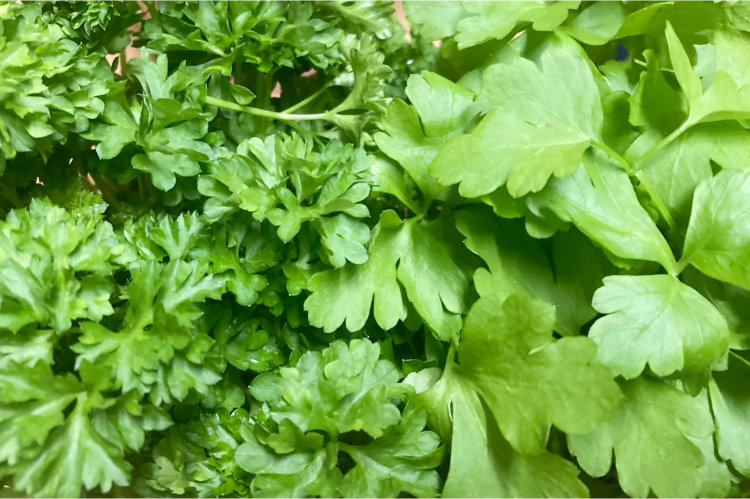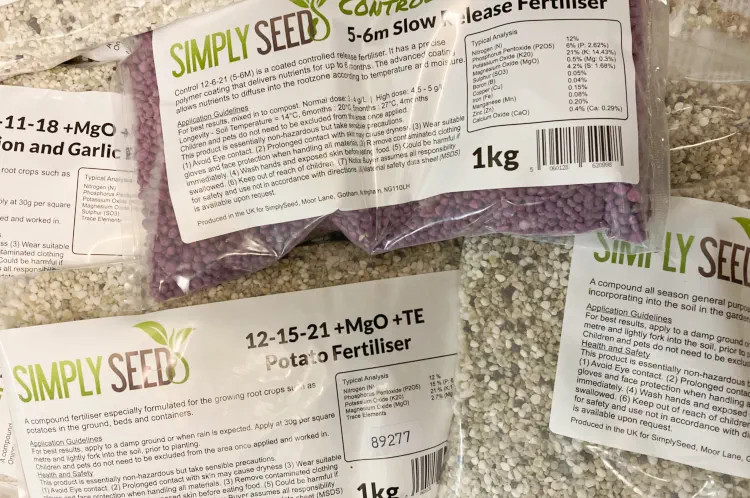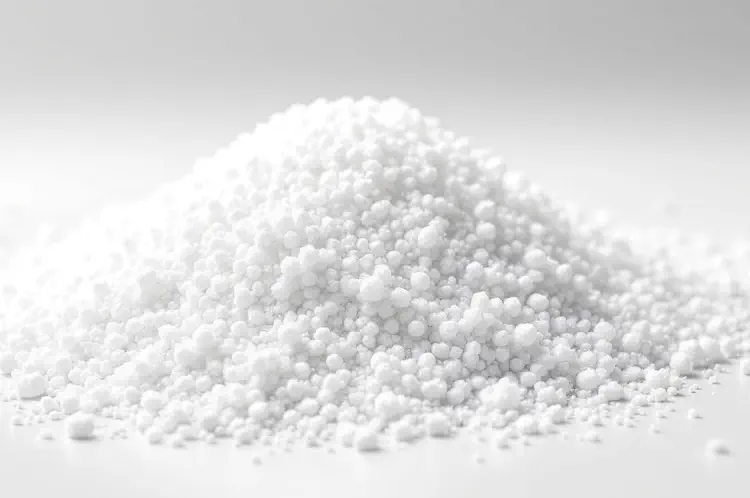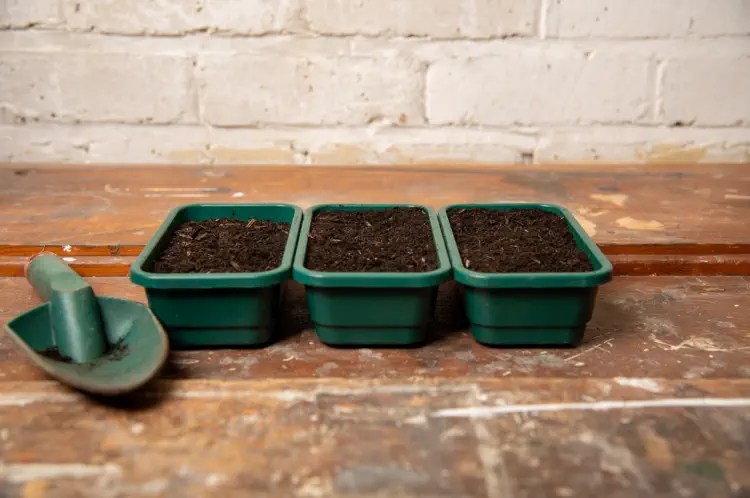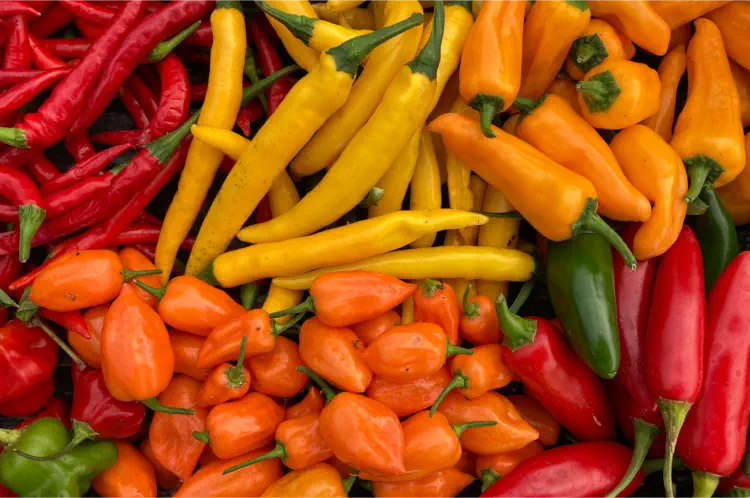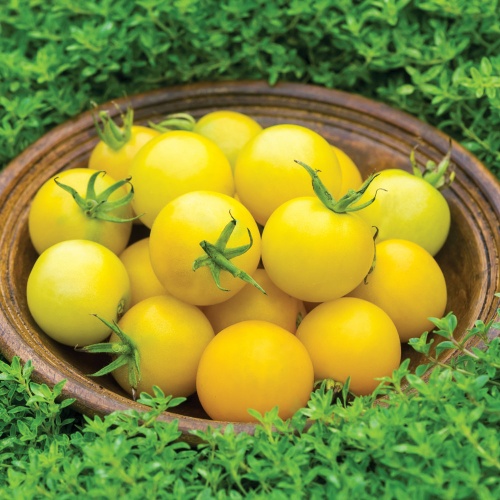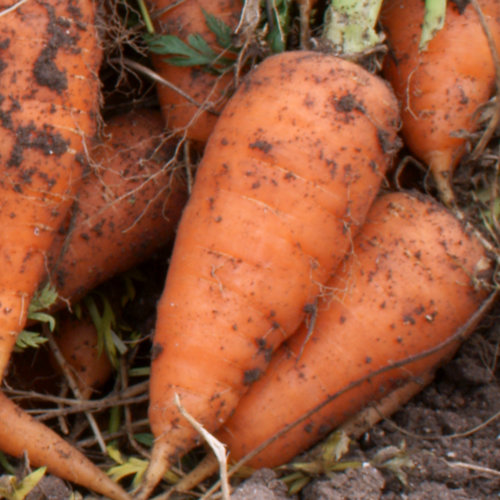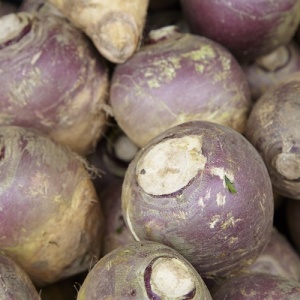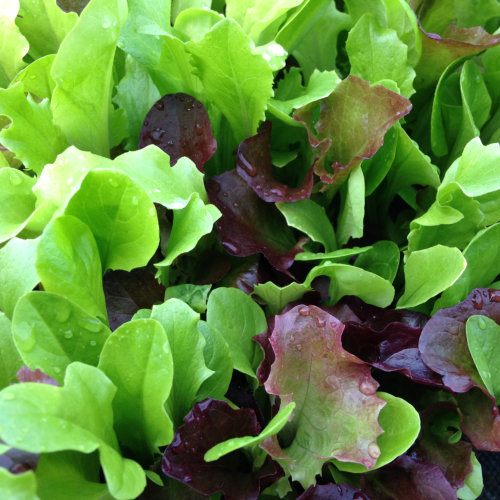All professions, sports, crafts and hobbies have their own specific terminology, which to anyone on the outside, might sound a bit like technical jargon or gobble-de-gook. Gardening, or horticulture to give it its specific term, is no different. Below is a list of all the most common gardening terms you might come across, which for a beginner to gardening, could help you hold your own in a gardening conversation with those who are a little more knowledgeable. This does not take into account all the possible local and regional variations and the many thousands of specific plant names and their variations.
Glossary of Gardening Terms.
A –
Acid Soil
Acid soil is a type of soil that has a pH level of below 7.0. This type of soil is often found in areas with high levels of rainfall, as the water can leach out essential nutrients and minerals. As a result, acid soil can be very difficult to garden in, as plants may not be able to take up the necessary nutrients for growth.
In addition, acid soil can also be very corrosive, which can damage plant roots and make it difficult for new seedlings to take hold. However, there are some plants that thrive in acid soil, such as rhododendrons and azaleas. For gardeners who wish to grow plants in acid soil, it is important to choose the right plants and to take care not to damage the delicate ecosystem.
Aeration
Aeration simply means adding oxygen to something.
In terms of gardening, aeration usually refers to loosening up or punching holes in compacted soil so that air, water and nutrients can reach the grassroots more easily. Aeration can be done manually with a garden fork or aerating tool, or mechanically with a gas-powered lawn Aerator.
Aeration is beneficial because it helps reduce water runoff, improves drainage, decreases compaction and thatch build up, and encourages a healthy root system. Aeration is especially important on high-traffic areas of your lawn, such as where kids play or where you typically walk to get to the garden. Aerating once or twice a year will help keep your lawn healthy and looking its best!
When composting, aeration helps to promote the growth of beneficial bacteria and fungi, which play an important role in decomposing organic matter. Aeration also helps to improve drainage and prevent compaction. There are several ways to aerate compost, including turning it with a pitchfork or using an Aerator. Aeration is an important part of the composting process, and it should be done on a regular basis to ensure that compost remains healthy and active.
Aerial Roots
Aerial roots are a type of root that grows above the ground. These roots are typically found in plants that live in tropical climates, where they help the plant to anchor itself to tree trunks or other structures. Aerial roots can also be found in some houseplants, such as philodendrons and ficus trees. While they are not required for these plants to thrive, aerial roots can help to support the plant and keep it healthy.
In order to encourage aerial roots to grow, gardeners should provide their plants with bright, indirect light and high humidity. With proper care, aerial roots can add an exotic touch to any indoor or outdoor garden.
Alkaline Soil
alkaline soil is a type of soil that has a higher pH than 7. This means that it is more alkaline than neutral. Alkaline soil is often found in arid or desert climates. It can also be found in areas with high limestone or alkaline rock content. The alkalinity of the soil prevents plants from being able to uptake essential nutrients, which can stunt growth or even kill the plant.
In gardening, alkaline soil is often amended with organic matter to help reduce its alkalinity and make it more hospitable for plants. This can be done through the use of compost, mulch, or other amendments. By increasing the organic matter content of alkaline soil, gardeners can make it more fertile and better able to support plant growth.
Annual
Annual plants are plants that complete their life cycle in one growing season. This means that they sprout from seed, flower, and produce new seeds all within the span of a few months. annual plants are often used in gardens because they provide a burst of color and can be easily replaced the following year.
Many annual plants are annual flowers, such as petunias and impatiens. However, some vegetables, such as beans and squash, are also annuals. No matter what type of annual plant you are growing, it is important to keep an eye on the blooming schedule so that you can replant on time. With a little planning, annual plants can add beauty and variety to your garden for years to come.
B –
Bare Root
Plants that are typically supplied during the dormant season from a nursery or garden centre, and which are not in a pot.
Bicoloured
A flower, which has two distinctly different colours.
Biennial
A plant that takes two years to reach maturity, after which it will flower and die.
Biological Pest Control
A natural method of controlling garden pests by introducing parasites. “Nemasys” is a typical example.
Bolting
In gardening, bolting refers to the rapid and premature flowering of a plant. This usually occurs when the plant is exposed to extended periods of warm weather or stress. Bolting can be disastrous for gardeners because it significantly reduces the yield of fruits and vegetables. In some cases, bolting also causes the produce to be smaller and of lower quality. To avoid bolting, gardeners should carefully monitor the weather forecast and take steps to protect their plants from excessive heat or stress. Additionally, they can choose varieties of fruits and vegetables that are less likely to bolt. With a little care and attention, bolting can be prevented and a bountiful harvest can be enjoyed.
Bulb
A bulbous, underground fleshy storage system, from which a plant will obtain its nutrients, grow and flower. A daffodil is a typical example.
Breaking Bud
When a flower or leaf bud breaks through its protective outer scales.
Broadcast Seed Sowing
Scattering seeds over a wide area rather than in drills or furrows.
C –
Chitting
Specific to potatoes, chitting is encouraging shoots to sprout on seed potatoes before planting. This is done by exposing the seed potatoes to light and placing them in a warm, dry place.
Climber
Refers to a plant that clings or climbs over an upright support.
Cloche
A clear, protective cover made from glass, plastic or polythene and used to protect plants from the elements.
Cold Frame
A low lying rigid container with a glass, plastic or polythene roof used to grow, acclimatise or protect young plants.
Contact Weedkiller
A chemical herbicide that kills weeds on contact with the stems and foliage.
Cordon
A plant that is pruned to remove side shoots, restricting its growth to one main stem.
Corm
Similar to a bulb in its purpose, with a stem base and a fibrous outer layer. Crocuses and some types of begonias are typical examples.
Crop Rotation
A method used to help reduce pests and diseases in vegetables by growing on different plots each year.
Crown
The part of a plant where the stems join the root.
Cultivar
A specifically selected plant that has been bred for its distinctive characteristics.
Cutting
A method of propagation involving cutting a stem from a plant and placing it in a specific growing medium to encourage it to produce roots.
D –
Damping Down
Applies to wetting the floor and staging of a greenhouse to reduce the temperature and increase humidity.
Damping Off
Refers to the sudden death of seedlings and young plants due a fungal disease, which rots the base of the stem.
Dead Heading
Removing dead or faded flowers to prevent self-seeding and to encourage the plants to produce new flowers.
Deciduous
Refers to any plant that loses its leaves in winter.
Dibber
Also called a dibble or dibbler, is a tool used for making holes in the ground in preparation for planting large seeds such as beans and for planting seedlings or bulbs.
Direct Sow
To sow seeds directly in the garden in a position where they will grow rather than in seed trays or pots.
Dormancy
A period in which a plant does not grow, usually between late autumn and throughout the winter.
Drill
A shallow groove made in the soil, usually with the edge of a hoe, in preparation for seed sowing.
E –
Earth Up
To draw soil up around the base of a plant to exclude light and to promote root growth from the stem. Usually practised when growing potatoes.
Espalier
Refers mainly to the training of fruit tree branches so that the main stem is vertical and the branches are trained horizontally or fan-shaped on supporting wires.
Evergreen
A plant that retains all or most of its leaves all year round.
Ericaceous
Refers to types of plants that prefer to grow in acid types soils. Typical examples are rhododendrons and azaleas.
F –
F1 Hybrid
A first generation cross, which has been bred between two established parents. Usually more vigorous and uniform than a typical ordinary hybrid.
F2 Hybrid
A new plant that has been created by crossing F1 hybrids. Usually less vigorous than an F1 hybrid.
Flower
Refers to the reproductive part of the plant. Most often colourful and attractive to insects.
Foliage
Refers to any type of plant leaves.
Foliar Feed
A liquid fertiliser that is sprayed onto plants and absorbed through the leaves.
Feathered Maiden
A one-year old tree or “sapling” with several side branches or “feathers”.
First Early Potatoes
The first potato crop to be harvested, producing new or baby potatoes.
Floricane
Refers to raspberry and blackberry stems that grow for one year prior to bearing fruit and flowers.
G –
Genus
Refers to a group of closely related plants linked by common characteristics.
Germination
The sprouting process of a previously dormant seed following the provision of warmth and water.
Going to seed
When a plant stops producing flowers and starts to produce seeds. Usually towards the end of its life.
Grafting
Refers to the merging of two growing stems from different plants. One is usually a root stock and the other provides fruits, flowers or specific characteristics. Fruit trees are prime examples.
Green Manure
A quick growing leafy crop, which is specifically grown to be dug back into the soil, providing nutrients. Red clover is a typical example.
Ground Cover
Plants that are low growing and quickly cover the soil, with the intention of suppressing weed growth.
Growing On
Is the process of transferring seedlings or young plants to larger pots or containers, allowing them to increase in size.
Growing Point
The very tip of a growing plant or shoot.
H –
Half-hardy
This term applies to a plant that can be damaged by frost or cold winds and needs to start growing indoors. It can then be planted out when the danger of frost has passed. The term can be applied to plants that are annual, biennial and perennial.
Hardening Off
Refers to the process of acclimatising tender or young plants, before planting them outside and exposing them to the elements.
Hardy
Describes a plant that has a high tolerance to extremes of cold weather, and which can be planted directly outdoors.
Haulm
An collective name for the leaves and stems of a potato plant.
Heavy Soil
Soil that contains a high percentage of clay.
Heeling In
The temporary planting, usually of a tree or shrub, before moving it to its final position.
Herb
A type of plant that is grown for its flavour, aroma or medicinal properties.
Herbaceous
Refers to plants that do not form a woody stem and will die back to ground level at the end of the growing season.
Humus
Describes decayed vegetable matter, which includes compost and leaf mould.
Hybrid
The cross-breeding of two plants, which have been chosen specifically for their qualities or characteristics of each parent plant.
I –
Insecticide
A chemical used to control or kill insect pests.
Internode
A section of stem between two nodes or nodules.
Inter-planting
The process of planting different species together.
Irrigation
The controlled provision of water to plants, as and when required.
J –
Jiffy Pots
Plant pots made from compressed peat.
John Innes Compost
Well-known loam based composts made to standard formulas.
K –
Knot Garden
Referring to a formal garden layout in a complex pattern separated by dwarf hedges, usually box hedging.
L –
Layering
A type of propagation, in which the shoot is left attached to the parent plant and then pegged into the ground, or encased in a growing medium, wrapped in polythene (air layering).
Leader
The main growing stem of a plant or tree.
Leggy
A term that is used to describe a plant that has grown tall or spindly, usually due to a lack of light.
Lateral
Another name for a side shoot on the stem of a plant.
Lime
A calcium compound that is applied to the soil to reduce its acidity, making the soil more alkaline.
Lime Tolerant
A plant that prefers to grow in a chalky soil.
Loam
A medium soil that is well balanced in proportion.
M –
Maiden
Referring to a grafted tree in its first year of growth.
Maincrop
Vegetables that crop throughout the main growing season. For example, maincrop potatoes.
Marginal Plants
Plants that like to grow in constantly moist or wet soil, usually at the edge of a pond or stream.
Medium
A growing mix, such as soil and compost or other material, in which plants are grown.
Module (Tray)
Usually refers to a tray consisting of small sections, which is used for grow individual seedlings and young plants.
Mulch
A layer of organic matter placed over the surface of the soil and around the base of plants to retain moisture and prevent weed growth.
Mycorrhizal
Refers to a mutually beneficial association between a fungus and a plant’s roots.
N –
Native
Referring to a plant that grows naturally in the wild.
Naturalise
To allow plants to grow wild as in nature. For example allowing daffodils to grow and multiply within specific grassed areas.
Nectar
The sweet liquid produced by plants, which it uses to attract pollinating insects.
Neutral (pH)
Refers to soil acidy or alkalinity. A neutral pH is pH7 which is neither acid nor alkaline.
Neutral Soil
A soil with a pH of 7.
Node
The point on a stem, from which leaves, buds and new stems grow.
NPK
The letters NPK stands for the three main chemicals in fertilisers, which are nitrogen, phosphorus and potassium.
Nursery Bed
A designated area used specifically for germinating seeds and for growing young plants prior to planting them out in the final positions.
Nutrients
Essential minerals required for healthy plant growth.
O –
Offset
Refers to a new young plant that naturally forms at the base of the parent plant.
Organic matter
Any decomposed plant or animal matter such as compost, leaf mould or manure. Used for improving soil structure and for providing nutrients to plants.
Oxygenator
An aquatic plant that releases oxygen into the water. For example, eelgrass, fanwort and red rotala.
P –
Peat
A natural, partially decayed, humus rich and water retentive material often used in compost.
Perennial
A plant that will grow for many years, flowering and then dying back each season.
Perpetual
Plants that flower almost continuously throughout a long growing season. A good example is Begonia Semperflorens.
Pinching Out
Removing the growing tip of a plant to encourage the side shoots to grow, forming a bushy plant.
Plant Plug
A healthy young plant, which has been rooted in a plug of compost and is ready to be planted out.
Potting On or Up
The process of transferring seedlings or young plants into larger pots so they have more room to grow.
Pricking out
The name given to the process of gently loosening the seed compost, lifting the seedlings and then transferring them to pots or trays with more room to grow and develop.
Propagation
Increasing plant stocks by rooting cuttings and other methods such as layering.
R –
Rhizome
A horizontal fleshy swollen root, which is usually underground but occasionally at soil level.
Root
Usually underground this is the part of the plant through which water and nutrients are absorbed.
Root Ball
The combined roots and soil of a plant when it is dug up or lifted.
Root Crops
Vegetables that are grown for their edible roots. For example, carrots, swede, turnips and parsnips.
Rootstock
A strong growing plant, on which a young shoot or twig is grafted. Usually to provide the plant with increased vigour and disease resistance.
Rose End (Rosette)
The end of a seed potato with the most eyes. It is usually the flat end as opposed to the pointed end.
Runner
Refers to a spreading stem that roots to form new plants. Strawberries will often produce runners in the early autumn.
S –
Sap
The watery liquid contained within plants and used to transfer nutrients.
Scion
A side-shoot or bud cut from a plant for grafting onto the rootstock of another plant. Many rose bushes are grown this way.
Second Earlies
Refers to the second potato crop of the season.
Seed
The mature fertilised ovule containing a dormant embryo capable of growing into an individual plant.
Seedling
A young plant grown from a seed.
Self-Fertile
A type of plant that does not need pollen from another plant in order to fertilise and set fruit.
Self-Seeder
A plant that freely distributes its seed. A good example is nasturtium.
Self-Setter
A plant that has grown naturally and established itself such as an ash tree sapling.
Shoot
Also known as a stem, which is a young twig or bud breaking out from the main stem.
Side-shoot
A stem that grows on the side of a plant. On a tomato plant for example, side shoots are removed to encourage the plant to produce fruit and less foliage.
Stopping
Refers to the removal or pinching out of a stem’s growing point to promote branching out.
Succession Cropping
The process of sowing seed every 10-14 days to ensure regular cropping throughout a season. Lettuce is a good example.
T –
Tap Root
A strong root that grows downward. A carrot is an example of a tap root.
Tender
Any type of plant that is likely to suffer frost damage if unprotected.
Thinning out
The process of removing seedlings, more often from outside sowings, leaving some to grow and develop at a specific distance apart.
Tilth
Breaking up and raking the soil surface so that it is easy to manage. Usually performed before sowing seeds outdoors.
Topiary
Clipping, trimming and training shrubs, plants and trees into organised or recognisable shapes.
Transplanting
Moving a plant from one position of the garden to another.
Tuber
A swollen underground storage system or modified root.
U –
Underplanting
The practice of planting low-growing plants beneath taller ones to help suppress weeds.
Upright Habit
Referring to plants that have vertical or semi-vertical branches.
V –
Variegated
Leaves that are more than one colour. They can be edged or blotched with a different colour to the main colour.
Ventilation
Refers to the control of air movement in a greenhouse to regulate the internal temperature.
Vermiculite
A lightweight mineral used in some types of compost to aid water retention. Often used as an alternative to peat.
W –
Waterlogged
Soil that is fully saturated with water after heavy rainfall, or over-watering.
Weed
Any plant that happens to be growing in the wrong place.
Whip
A young plant with one single main stem and no lateral or side shoots.
X –
Xerophyte
A type of plant that is adapted to withstand a shortage of water by storing its own supply. Cacti and succulents are examples.
Y –
Yield
Referring to the amount of harvest produced per plant or per acreage.
Z –
Zygote
A newly formed fern in its early stages of growth.
Can you think of anything we have missed? Leave a comment below and let us know....
All blog content on this page is copyright of SimplySeed and is not to be reproduced without prior written permission. ©

